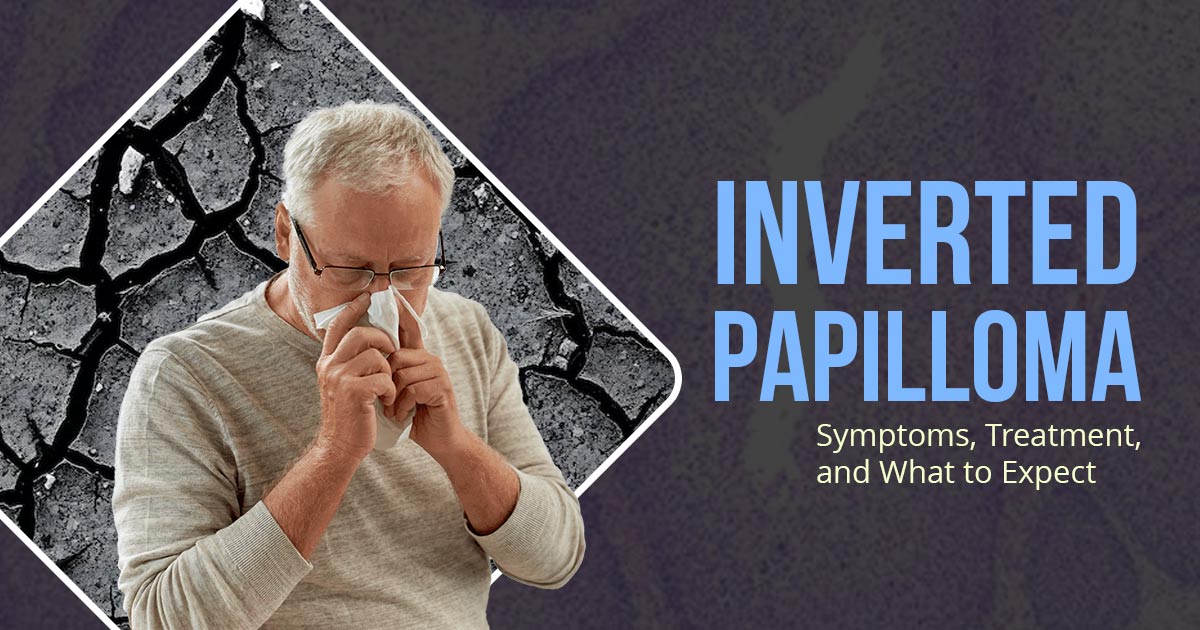What You Need to Know About Nasal Tumors Like Inverted Papillomas

Hearing about any kind of tumor can be scary, but understanding the facts can really help ease those worries. One type of tumor you might not have heard of is called an inverted papilloma. It’s pretty rare, and while it’s not cancer, it’s still something that needs attention because it can cause issues if left untreated.
This condition is more common in middle-aged men and affects about 2 in every 100,000 people. The good news? With today’s medical treatments, it’s manageable as long as you get the right care!
What Exactly is an Inverted Papilloma?
An inverted papilloma is a type of growth that pops up in your nasal cavity or sinuses. Instead of growing outward, like many tumors, it grows inward. Because of this, it can mess with nearby tissue and bones, which is why treatment is so important.
Although it’s not cancer, there’s about a 5-15% chance that it could turn into cancer, particularly a form called squamous cell carcinoma.
Some studies suggest these tumors might have a connection to HPV (the human papillomavirus). HPV is mostly known for causing things like cervical cancer, but certain strains might also play a role in tumor development. Doctors are still researching this to figure out how strong that link is.
How Can You Tell If You Have One?
Spotting an inverted papilloma is tricky because it can look a lot like regular sinus issues. Here are some common signs to watch for:
- Feeling like your nose is always stuffed, usually on one side.
- Getting sinus infections over and over again that don’t clear up completely.
- Nosebleeds, even small ones.
- Mucus or a runny nose coming from one nostril.
- Pressure or pain in your face.
Sometimes, doctors even find these growths by accident when they’re checking your nose for something else.
To figure out if it’s an inverted papilloma, doctors use a tool called a nasal endoscope. It’s basically a tiny camera that goes into your nose to get a close look. If they see a tumor, they’ll take a small sample of it (this is called a biopsy) to confirm what it is.
Imaging tests, like CT or MRI scans, might also be used. These help doctors see how big the growth is and if it’s affected nearby areas.
How Fast Does it Grow?
There’s no hard rule here. For some people, the tumor grows slowly, while others might notice it getting worse within a few months. That’s why regular checkups are really important. They help your doctor keep an eye on things and catch any changes before they become a bigger deal.
What Are the Treatment Options?
When it comes to treating inverted papillomas, surgery is the only real option. These growths won’t just go away on their own.
Most of the time, doctors use a minimally invasive procedure called functional endoscopic sinus surgery (FESS). They remove the tumor through your nose using special tools, so there’s no need to cut into your face or scalp.
If the tumor is in a more complicated spot, like near your eye or skull base, doctors might use a different method. This could involve a team of specialists, like ENT doctors and neurosurgeons, working together to remove the tumor while keeping the area safe.
One big challenge is that these tumors can come back. About 20% of people deal with a recurrence within the first few years after surgery. To lower this risk, doctors usually treat the bone around the tumor during surgery and schedule regular follow-ups for up to five years.
Is It Serious?
While an inverted papilloma isn’t life-threatening on its own, ignoring it can lead to major problems. If left untreated, the tumor can grow into nearby structures, like the bones around your eyes or your skull, causing permanent damage. There’s also that small chance it could turn into cancer, which is another reason to take action early.
Dust, Fumes & Allergies: The Overlooked Triggers
Most research on inverted papilloma (IP) focuses on viruses like HPV and how the tumor behaves under a microscope. But there’s not much info on how environmental or work-related exposure—like breathing in industrial dust, wood particles, or chemical fumes—might play a role in causing or bringing back IP.
Another angle that hasn’t been studied much is long-term exposure to common allergens like mold, pollen, or dust mites. These are known to cause things like sinusitis or allergies, but no one really knows if they also have a hand in triggering or worsening inverted papilloma.
Some of these areas are still flying under the radar and haven’t been confirmed by solid research yet. What makes IP tough is its tendency to grow back and sometimes, it can take a more dangerous turn. Thankfully, endoscopic surgery keeps getting better, helping doctors remove it more completely and lower the chances of it returning. But even with better tools, keeping up with follow-up checks is key.
